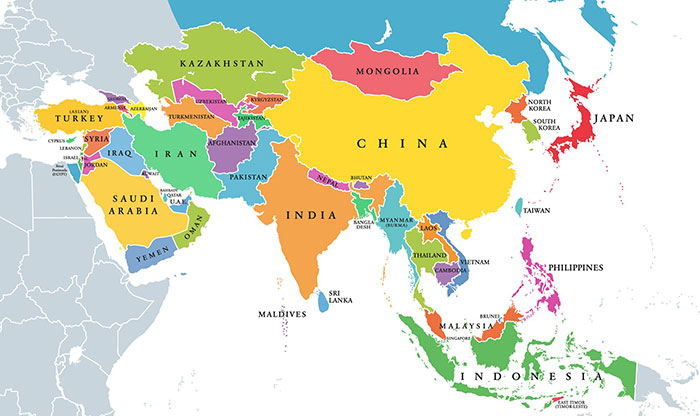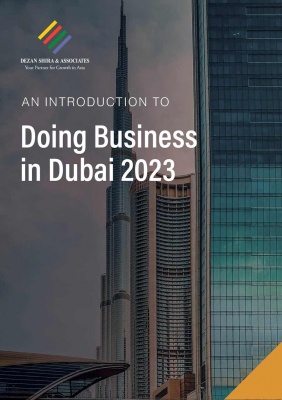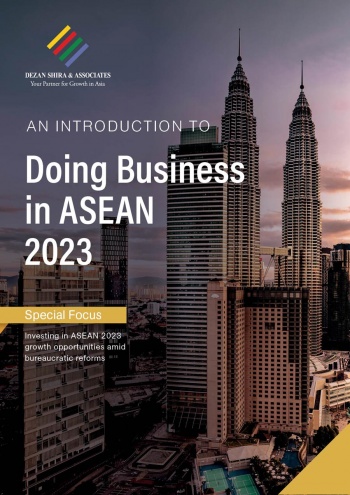UAE, India Multilateral Trade: 2023/24 Status and Prospects
By Farzad Ramezani Bonesh
India and the UAE established diplomatic and political-economic relations in the 1970s, and mutual embassies were then opened. But the relations between UAE and India have been significantly strengthened over the last decade.
While no Indian Prime Minister had previously visited the UAE from 1981, current Indian Prime Minister Narendra Modi has bucked that trend and visited the UAE many times since 2015. The two countries signed a comprehensive strategic partnership agreement in 2017 to promote relations, and official visits such as the Abu Dhabi crown prince’s visit to India in 2016 have expanded in various fields. The meeting of leaders and officials in 2022 expanded this still further, culminating in their celebrating 50 years of diplomatic relations.
Areas of Cooperation
Recently, geopolitical and geoeconomic changes, along with the prospect of global crises, have led the two countries to cooperate more. The UAE is not ready to sacrifice its economic interests in maintaining relations with India for the interests of Pakistan. Also, India doesn’t see its interests without the UAE.
Indian expatriate groups are the largest non-Emirati group in the UAE, with around 3.5 million people. By being present in different sectors in 2020, they now form 39.9% of the total population of the Emirates and are present in all areas of the economy, from billionaires running global MNCs to taxi drivers.
The increase in annual remittances sent by Indians from the UAE is now at the top of the list of non-resident remittances to India and plays an important role in increasing the position of the Indian economy. 60% of CFOs in major UAE companies are Indians. At trilateral and quadrilateral levels, India and UAE have worked on establishing food corridors. In October 2021, India-Israel-UAE and the US formed the agreement “I2U2” with the aim of economic cooperation.
Their cooperation is focused on different levels and mutual areas of water, energy, transportation, space, health and energy supply, and global and regional food security.
Also, the mutual achieving of numerous strategic goals, including increasing product yield in India, food and energy security, marketing of crops, and maintaining export quality standards, are under consideration by New Delhi and Abu Dhabi. Under the I2U2 plan, the UAE has committed to invest US$2 billion in the Indian food industry. Complementarity, the strengths of the UAE’s investment capabilities, and India’s human capital and arable land have expanded joint business prospects.
With the proposed India-Middle East-Europe corridor, India is also pursuing the connection of India, with the Persian Gulf via the INSTC, securing the safe transit of goods and protecting its interests in cooperation with the UAE.

Energy
Energy is the key to India’s economic growth, and the country’s energy needs are increasing. Attracting massive investment to develop oil and gas infrastructure is part of India’s important steps. Today, the UAE is one of India’s largest major energy suppliers and plays an important role in India’s strategic oil reserves.
New Delhi wants to achieve 40% of its energy from renewable and non-fossil sources by 2030. In this regard, New Delhi and Abu Dhabi cooperate in the form of I2U2 in the development of a hybrid energy power plant in Dwarka, Gujarat, with a capacity of 300 MW of wind and solar energy and the expansion of renewable energies. Also, UAE’s International Renewable Energy Agency (IRENA) has committed to invest in India. Carbon products rank first in the list of imported materials from the UAE, and joint efforts are important to achieve energy security.
CEPA
In another dimension, India and the UAE signed the Comprehensive Economic Partnership Agreement (CEPA) on February 2022. The main goals of the agreement are “facilitating trade, immediate and gradual reduction of duties on imported goods and transparency in customs procedures and increasing the volume of annual trade to US100 billion within 5 years. That makes it one of the most dynamic Free Trade Agreements ever committed to in terms of economic results.
This agreement guarantees free and open trade between the two countries and greater access for exports, reduction or elimination of tariffs on more than 80% of products, strengthening cooperation in the sectors of financial services, ports, logistics, export development, food security, and advancing the process. It ensures sustainable economic growth.
The CEPA agreement has also provided an opportunity for key sectors, such as agricultural and food products, gems, and jewelry, and increased access to service providers.
Apart from the quick and successful signing of CEPA, the agreement has had a significant impact on bilateral trade and key sectors such as fuel, electrical machinery, jewelry, cars, oils, machinery, Cereals, coffee, and agricultural products; has had chemical products and. CEPA was India’s first agreement in the Middle East region and the UAE’s first agreement with a sovereign country outside of its commitments with the Gulf Cooperation Council (GCC).
New Delhi continues to facilitate the attraction of foreign capital, and foreign direct investment from the UAE to India has increased. India is an important country for the UAE and a source of food, jewelry, labor, medicine, and investment opportunities.
The UAE’s sovereign wealth fund and other private companies have invested over US$34 billion in India between 2018 and 2022 across sectors ranging from banks to manufacturing companies and startups. The UAE invested in 22 FDI projects in leading healthcare, construction, financial services, and food sectors in India in 2021.
With an investment of US$18 billion, Abu Dhabi, the UAE capital and main seat of power, was the seventh largest investor in India in 2022 and is expected to invest US$7 billion in the Indian food industry. India and the UAE have signed a memorandum of understanding whereby Abu Dhabi has committed to invest US$75 billion in infrastructure development in India. To some degree, the Middle East and especially UAE financing has become an alternative source of infrastructure finance given India’s problems with China and its Belt and Road Initiative.
In this regard, the activity of the foreign office of the Dubai International Chamber in Mumbai, the opening of the new regional office of the UAE Ducab Group, the investments of the UAE private sector in Uttar Pradesh projects, the presence of Dubai Ports World (DP) in several Indian ports and terminals, presence of Abu Dhabi Investment Organization, participation in the field of education and health care, the continuation of the exchange of delegations, and so on are signs of the strengthening of the UAE’s economic presence in India.
The UAE is also becoming a major financial hub for India. The attractiveness of investing, security, the tax system, religious pluralism, etc., have led to the increase of Indian businesses and investors in the cities of the UAE.
With the registration of more than 11,000 Indian companies in Dubai in 2022, the total number of Indian MNCs, such as Hinduja Group, Danube, Sobha Group, Indian Oil Corporation, Essar Group, and Bank of Baroda, has reached more than 8,313. The next step will be to attract their Indian suppliers and smaller investors to support them.
In fact, Indian companies in the UAE benefit from better access to entry markets in the Middle East and Africa.
Apart from the importance of Dubai for New Delhi and the multi-billion-dollar presence of Indians in Dubai’s housing sector, the encouragement of the Jebel Ali Free Zone and DP World is important for the development of trade exchanges between the two sides.
India is a leader in digital infrastructure and has already agreed to set up an Indian Institute of Technology in the UAE to “further encourage and support innovations and technologies.” In the last year, there has been a massive influx of Indian startups to Abu Dhabi and Dubai.
According to some estimates, the investment of Indian companies in the UAE, especially Dubai and Abu Dhabi, is between US$55-85 billion. Many Indian companies have set up production units or are present in the tourism sector.
In 2021, the UAE exported US$42 billion to India. The main export products are crude oil, diamonds, and gold. That same year, India exported US$25.4 billion to the UAE. The main export products were refined oil, jewelry, and diamonds.
Bilateral trade between India and UAE has reached its highest level. India’s exports to the UAE in 2022-2023 have grown by almost 12% to reach US$31.3 billion. India’s imports from the UAE will grow by 18.8% to reach US$53.2 billion in 2022-23.
India is the UAE’s second-largest trading partner, and the UAE is India’s third-largest trading partner after the United States and China. Two-way trade between India and the UAE increased to US$84.5 billion during April 2022-March 2023, a 16% year-on-year growth. In 2022, India’s major exports to the UAE were petroleum products, gems and jewelry, mineral fuels, oils, distillate products, pearls, precious stones, metals, coins, grains, electrical and electronic equipment, iron and steel, and machinery, nuclear reactors, and boilers.
In contrast, India’s major imports from the UAE include crude oil, gold, pearls and precious stones, ore and scrap metal, chemicals, electrical machinery, etc. The Emirates “Golden Visa” residence permit for the Indian elite and agreements in recent years have expanded the volume of tourism and travel between India and the UAE. Also, cooperation has also increased in a number of digital innovations, technology partnerships, security cooperation, and bilateral defense engagement.
Vision
In fact, challenges and risks such as unfavorable geopolitical developments and economic uncertainties such as the possibility of a recession and adjustment of global demand may affect the prospect of cooperation between the two countries in the short and long term.
The lack of an agreement on air services, the lack of granting UAE citizenship to Indians, the working conditions of Indians, concern about exports of religious extremism, the status of the free trade agreement with the GCC, legal problems, among other misaligned bilateral issues are other challenges of expanding commercial cooperation.
But New Delhi’s plans to become the world’s third-largest economy by 2027, and Abu Dhabi’s efforts to double the size of its economy by 2030 have brightened the outlook for cooperation.
According to the Minister of Commerce and Industry of India, both countries are entering a golden era for economic and trade cooperation.
It seems that the future of trade and economic relations will also be deepened due to the CEPA, the discussion on the integration of customs and logistics portals, removing more duties from exports, strengthening non-oil trade, solving the concerns of exporters, strengthening trade exchanges with two local currencies (dirham and Indian rupee) and so on. Meanwhile, the trade between India and the UAE is likely to exceed US100 billion by 2030.
Dezan Shira & Associates assist foreign investors into Asia and have done since 1992. We provide market research, corporate structuring, tax planning, compliance, and ongoing support to foreign investors throughout Asia. In relation to this article, we have three offices in India and one in Dubai. Please contact them for advisory services at either india@dezshira.com of dubai@dezshira.com
Related Reading
- Dubai’s Jebel Ali Port And Free Trade Zone A Magnet For Indian Investors
- Opportunities for UAE-Based Businesses in India: The New CEPA Trade Agreement
 An Introduction to Doing Business in Dubai 2023
An Introduction to Doing Business in Dubai 2023 An Introduction to Doing Business in India 2023
An Introduction to Doing Business in India 2023
About Us
Middle East Briefing is one of five regional publications under the Asia Briefing brand. It is supported by Dezan Shira & Associates, a pan-Asia, multi-disciplinary professional services firm that assists foreign investors throughout Asia, including through offices in Dubai (UAE), China, India, Vietnam, Singapore, Indonesia, Italy, Germany, and USA. We also have partner firms in Malaysia, Bangladesh, the Philippines, Thailand, and Australia.
For support with establishing a business in the Middle East, or for assistance in analyzing and entering markets elsewhere in Asia, please contact us at dubai@dezshira.com or visit us at www.dezshira.com. To subscribe for content products from the Middle East Briefing, please click here.





